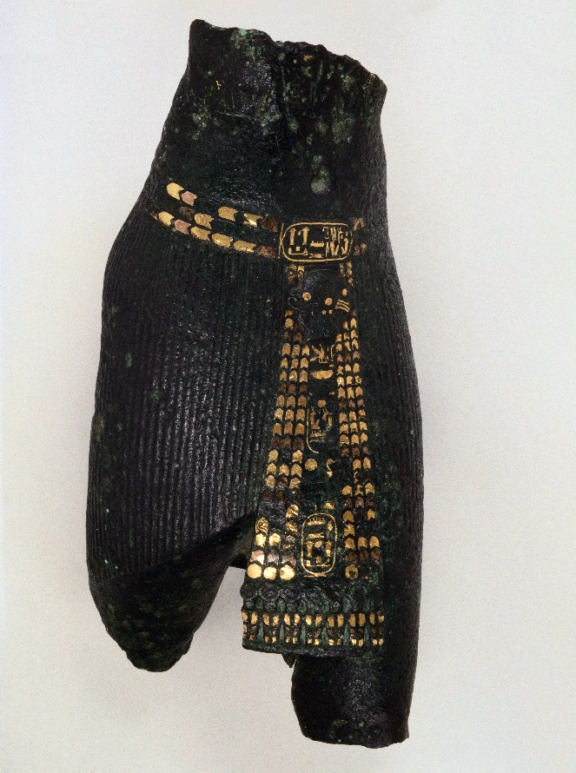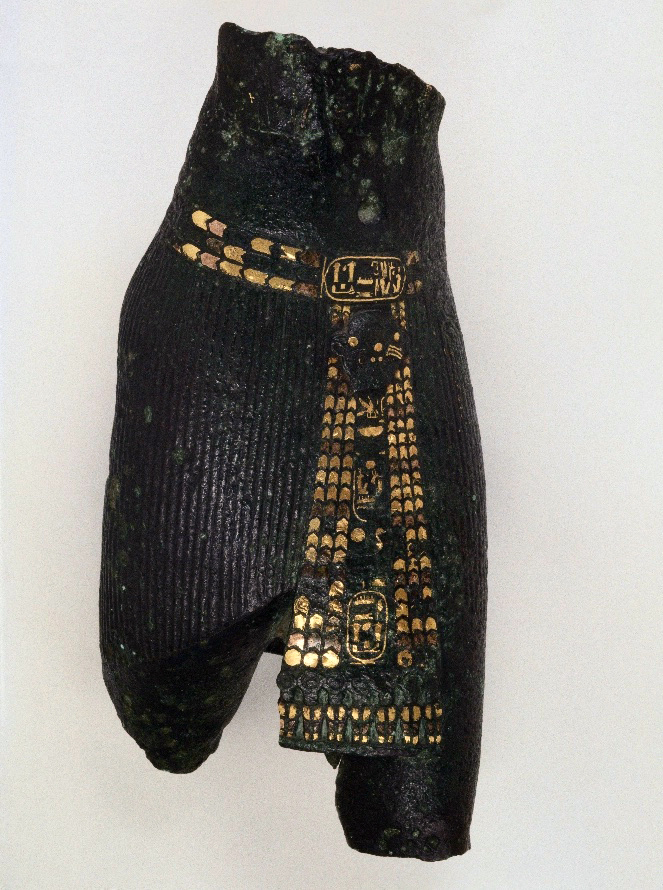
- Egypt, Third Intermediate Period, 23rd Dynasty (818–793 BC)
- Bronze inlaid with gold and copper
- Inv. 52
Torso of King Pedubast
The inscription on the belt and vertical band of the apron reveal that this fragment of a marching male figure that was evidently for use in a temple depicts King Pedubast, the first pharaoh of the 23rd Dynasty.
In addition to the hieroglyphic inscription, the sophisticated gold and copper inlay forms a pattern of feathers that imbues this piece with the characteristic magnificence of bronzes from the Third Intermediate Period (1070–712 BC), a period of great political power and consequent artistic dynamism.
The decoration of the apron also includes a panther’s head and a frieze of uraeus, symbolising the power of this king, who was – according to the inscription – ‘beloved of Amun’, the son of the goddess Bastet and ‘King of Upper and Lower Egypt, Lord of the Two Lands.’
Count Grégoire Stroganoff, Rome. Acquired by Calouste Gulbenkian through Duveen, Frederik Muller, Amsterdam, 13 December 1921.
H. 26 cm
Assam 1991
Maria Helena Assam, Arte Egípcia. Lisbon: Calouste Gulbenkian Museum, 1991, pp. 64–5.
New York 1999
Katharine Baetjer and James David Draper (eds.), 'Only the Best'. Masterpieces of the Calouste Gulbenkian Museum, Lisbon, exhibition catalogue. New York: The Metropolitan Museum of Art, 1999, p. 25, cat. 7.
Lisbon 2001
Calouste Gulbenkian Museum. Lisbon: Calouste Gulbenkian Museum, 2001, p. 19, cat. 4.
Araújo, 2006
Luís Manuel de Araújo, Egyptian Art. Calouste Gulbenkian Museum. Lisbon: Calouste Gulbenkian Museum, 2006, pp. 98-99, cat. 16.
